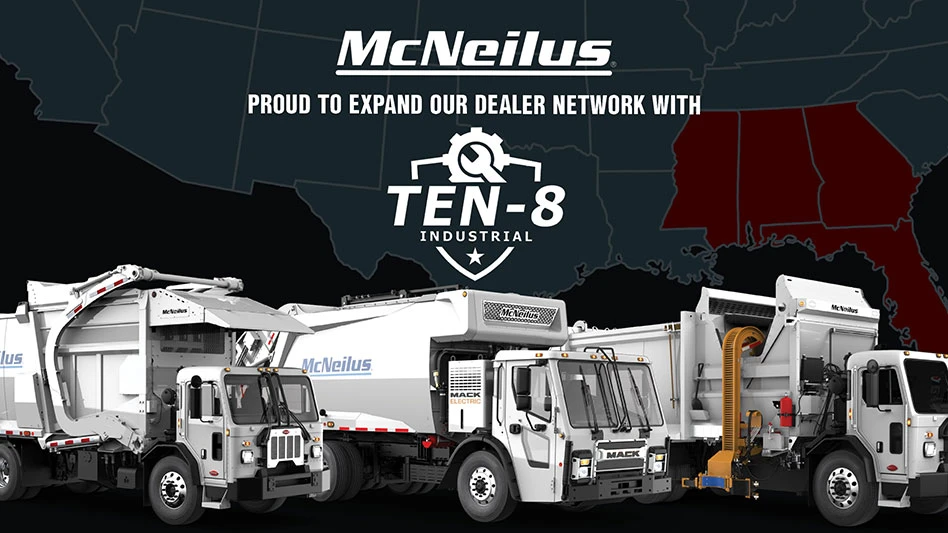
We are witnessing an increased interest in advanced solid waste processing technologies such as anaerobic digestion, gasification and pyrolysis in the U.S. today. While the regulatory community may be familiar with the old waste conversion standbys of mass-burn and refuse-derived-fuel (RDF) combustion, they may be far less so with these newer technologies. Agency forms, policies, regulations and guidance documents may not address the unique characteristics and performance capabilities of these new technologies.
A critical component of any project development effort should be a well thought out regulatory approval plan. Such a plan should be established as early as possible in the project life cycle and will list out each and every permit and governmental approval needed to construct and operate the facility. This approval plan should include a brief scope of the engineering and technical data required to complete each application package along with a timeline and budget for obtaining the approvals.
Obtaining the needed approvals and permits in a timely manner is of crucial importance in the process of developing and financing a solid waste processing technology facility. The starting point for any project regulatory approval plan is defining the project interface points with the surrounding ecosystems and community and describing the potential impacts from the facility. For a typical waste conversion project, these interface points are the air, land, water and surrounding community.
All solid waste conversion projects are required to obtain general construction permits as well as waste processing specific permits. There will be variations in the titles and the standards between different types of technologies and different states, but the permits can generally be divided into two groups. The first group includes the general construction permits that apply to most industrial facilities such as zoning and building occupancy permits.
The second group of permits includes those that regulate the emissions to the surrounding areas and are specific to the activity of solid waste processing. This group can include air, storm water discharge and solid waste permits. Although all listed permits are very common, the challenge arises when standards for the specific types of solid waste processing facilities are not clear or are not existing at all due to the limited exposure of the regulatory bodies to these specific technologies.
THE AIR PERMIT
No interface point will likely garner more of the public’s attention and focus than the airborne emissions from the waste processing facilities.
Mass-burn waste-to-energy facilities have proven records of complying with stringent air emissions regulations, and improvements in control technology have resulted in current emissions rates being well below the regulatory standards. The demonstrated track record of the alternative waste conversion technologies is sparse however, so the public may be skeptical of their data.
Gasification systems have demonstrated the ability to produce a synthetic gas so clean that it can be combusted on-site in conventional reciprocating engines and gas turbines without the need for extensive post combustion exhaust gas treatment systems.
Pyrolysis produces liquid synthetic fuel with very small amount of combustible gas that is collected under highly controlled conditions. Therefore, there is no direct source of air emission from combustion. The air emissions from these advance technology facilities will likely be low enough that they will qualify as a minor source within the permitting regulatory framework.
Minor sources are generally governed by state law which may offer a more expedited approval schedule than that of major sources which are governed by Federal EPA rules and regulations.
Anaerobic digesters are almost always of a size that will result in a minor source classification for air emissions. These facilities generate electricity and heat from the produced biogas and are equipped with a flare that can be used in case of emergency or when the biogas cannot be otherwise utilized.
The AD plants that upgrade the produced biogas to pipeline quality gas may even qualify to be exempt from air permit all together.
Minor source status does not necessarily mean that a conversion project will face a less robust and stringent set of environmental performance standards. Many states incorporate a Best Available Control Technology (BACT) review for large minor sources: so scrubbers, baghouses and selective catalytic reactors are commonly required as air emission control devices for minor sources. We have even had experience where the state environmental regulatory agency required air pollutant dispersion modelling and analysis for a minor source project. A minor source permit does not mean dirtier air permit, but it may mean a more efficient air permitting process.
LAND AND WATER
As a solid waste management facility, the land and water impacts of an advanced waste conversion facility are similar to those of a traditional solid waste combustion facility, recycling facility or transfer station. These facilities are required to comply with exclusionary zones and properly line set backs established under state solid waste management siting regulations that apply to all other solid waste processing and handling facilities.
The facility design needs to conform to state and local regulations and guidance governing the receipt, storage and handling of municipal solid waste. Residues from the facility must be characterized for toxicity and disposed of at properly permitted disposal locations.
Storm and process water that comes into contact with unprocessed waste needs to be managed as leachate and must be pretreated before it can be discharged into the public sewer system. In the case of an anaerobic digestion facility, this waste water can be recirculated through the system and lower the need for extensive industrial processing of the waste water from the facility. If access to the public sewage system isn’t available at the project site, the facility design may need to incorporate a full waste water treatment system.
For the construction phase of the facility, the project will need to obtain a National Pollutant Discharge Elimination System (NPDES) permit and implement a storm water management plan.
COMMUNITY
While the aforementioned areas largely consist of demonstrating compliance with prescribed numerical limits, dealing with a project’s impact on individuals or communities is more qualitative. There may be some impact areas with prescribed standards, such as zoning or land use planning, but many impacts will be measured on a gradation scale, for example, will the flow of local traffic be impacted beyond a tolerable level? Some states have adopted regulations and policies which require a comprehensive overall assessment of a solid waste management facility’s environmental and societal impacts.

At a local level, few issues have the ability to become more politically contentious than does a new solid waste management facility. There is a tendency on the part of solid waste planners to site new facilities at or nearby existing facilities. The community may already own excess land that can be used to host the new facility. There may be support infrastructure which can be reused, reducing required project investment. Traffic patterns for waste transportation vehicles are already established.
Ancillary businesses such as waste collection companies may have already established operational bases nearby. All the above are good reasons for siting new conversion projects at existing waste management sites. On the other side of the facility siting issue, however, is the fact that the neighbors of the existing facility may have already been impacted for 30 or more years, and they don’t want to experience another 30 plus years.
Many states and localities have implemented social justice policies and safeguards in an effort to make sure the concerns of minority communities and the less politically influential are addressed.
OTHER REVIEWS
If the advanced technology project’s business model depends on receiving federal support via grants, loans, land lease, review under the National Environmental Policy Act (NEPA) is required. The NEPA review is typically conducted by the lead agency providing the financial support or offtake contract.
At a minimum, the NEPA review will consist of an environmental assessment of the project’s impact to the physical (air, water, land) and social (community, cultural, historical) environment. If no material impacts are revealed, the lead agency can issue a FONSI (Finding of No Significant Impact). In case significant impacts are discovered, a more detailed Environmental Impact Statement (EIS) must be prepared.
Conclusions
Advanced solid waste conversion technologies must include solutions for mitigating and minimizing impacts to the natural environment and surrounding community. The final outcome of the regulatory approval process is highly dependent the project development team’s ability to plan, communicate and implement a sound impact mitigations strategy.

Explore the June 2016 Issue
Check out more from this issue and find your next story to read.
Latest from Waste Today
- Alberta recycling group selects Diversys to digitize its beverage container recovery program
- Recycling Today Media Group hires Mallory Szczepanski
- Bower, Varta join forces on AI-powered scanning for consumer batteries
- IEG appoints Ty Rhoad to chief revenue officer
- Veralto invests in Axine Water Technologies
- Meridian Waste announces promotions and new hires
- Neste, Air Canada sign SAF supply agreement
- Municipal Waste Management merges with Collective Waste Solutions





